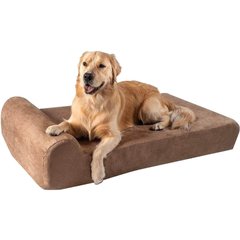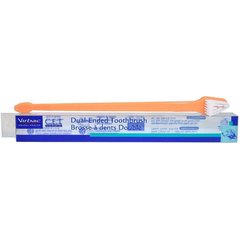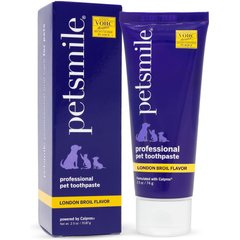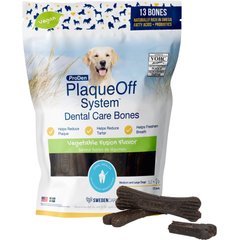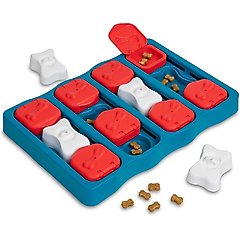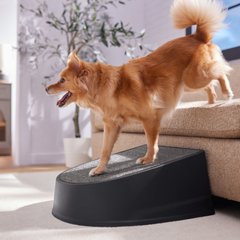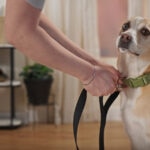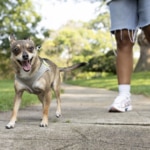10 Signs Your Dog Is Getting Old
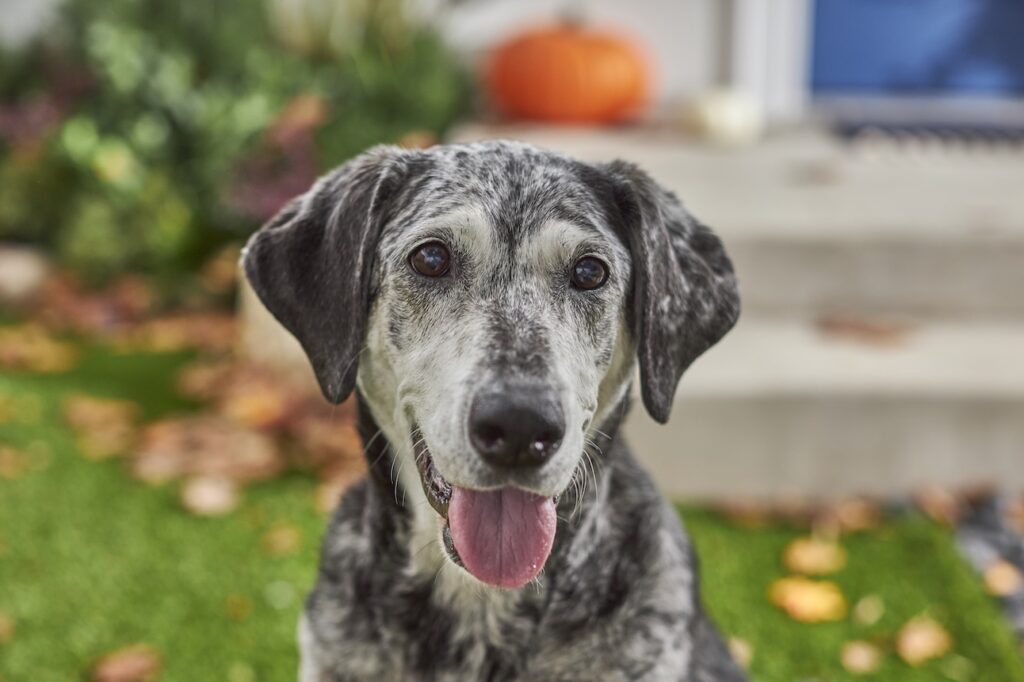
Photo by Chewy
Just like us, dogs change as they get older. And while some signs of aging are easy to spot, others might catch pet parents by surprise.
Understanding what’s normal can help you better support your senior dog’s health and comfort. From graying muzzles to changing sleep patterns, here are 10 common signs your dog is aging, plus tips for helping them feel their best in their golden years.
Key Takeaways
- Every dog is different, but there are many common physical and behavioral signs that a dog is aging.
- Physical signs of dog aging include weight gain, slower movements, and graying fur.
- Behavioral changes, like restlessness at night, peeing in the house, and increased irritability, can also be a sign of aging.
- Talk to your vet if you notice any physical or behavioral changes in your senior dog.
Signs Your Dog Is Aging
Dogs enter their senior years when they’re between 6–10 years old, depending on their breed and size. While every pup is different, here are some of the most common signs of aging in senior dogs.
1. They’re Slowing Down
Your dog might have a little less pep in their step, and declining joint health is often the culprit.
“Just like people, as dogs age, their joints and muscles naturally undergo wear and tear,” says Erin Koballa, DVM, at Charlotte Companion Animal Hospital in Charlotte, North Carolina. “Arthritis, muscle loss, and reduced flexibility are some of the most common culprits behind slower movement.”
Pain medication, joint supplements, and changes to your dog’s exercise routine can help improve comfort and preserve their mobility.
But there can be other reasons why a senior dog moves more slowly, says Carly Fox, DVM, senior veterinarian at the Schwarzman Animal Medical Center in New York City. These include:
- Changes in cognitive abilities
- Changes to eyesight
- Neurologic decline
- Muscle loss
So, it’s important to keep up with routine veterinary care for your senior pet. A physical exam and routine testing, such as blood work, can identify underlying conditions that might be contributing to your dog’s slower speed.
2. They’re Gaining Weight
Older dogs can easily pack on a few extra pounds.
“Senior dogs tend to burn fewer calories because their metabolism slows down and their activity level often decreases, just like people as we age,” says Dr. Koballa.
Along with these natural effects of aging, some common health problems in older dogs—like Cushing’s disease, hypothyroidism, or diabetes—might also contribute to weight gain.
Because obesity can put more stress on your senior dog’s joints and organs, Dr. Koballa encourages pet parents to be proactive about curbing the problem by adjusting how much food a senior dog eats. If you’re unsure about how much to feed your dog, ask your vet.
3. They Become Anxious or Restless at Night
Anxious or restless behavior such as pacing and whining sometimes shows up in older dogs because of cognitive decline. The condition is similar to dementia in humans, says Dr. Koballa, and it can cause more obvious symptoms at night—sometimes referred to as “sundowning.”
In some cases, these changes in behavior are because of other physical problems related to aging.
For example, Dr. Fox says hearing and vision loss might make an older dog more disoriented at night. She recommends that pet parents create a safe and comfortable space for their senior dog to rest at night, away from stairs or other hazards.
An orthopedic dog bed can also help to keep them comfortable and might lessen restlessness related to joint pain.
Recommended Products
4. They Start Ignoring You
Don’t assume that your senior dog is giving you the cold shoulder when you call their name and they don’t come. Hearing loss is a common sign of aging in dogs, and it might explain why your dog doesn’t respond to you or is easily startled when you pet them.
While hearing loss isn’t reversible, you can change how you interact with your hard-of-hearing pet:
- Teach your dog hand signals for basic cues like come, sit, or stay.
- Approach your dog from the front and firmly tap your foot on the ground near them. The vibration will alert them to your presence.
- If your dog is sleeping, you might also put your hand in front of their nose and let your scent wake them up rather than startling them with your touch.
Remember that without a good sense of hearing, your senior dog is more prone to dangers, such as approaching cars. Make sure that, when outdoors, your senior dog is in a secure, fenced area or on a leash at all times.
5. They Have Bad Breath
If your older dog’s bad breath makes you cringe, you’re not alone. Halitosis—the official term for stinky breath—is a common problem in dogs, and the likelihood of it only goes up with age, especially if dental care isn’t consistent.
“Dental disease in pets can be cumulative, so older dogs can definitely have bad breath compared to their younger counterparts,” says Dr. Fox. “In order to help prevent this, daily toothbrushing is a must, as well as routine dentals with your veterinarian.”
It’s never too late to start new habits, although it may take time to train your senior dog to accept a toothbrush if they aren’t used to having their teeth brushed. Be patient, start with short sessions to get them acquainted with the brush, and pick a tasty dog-safe toothpaste. You might also use dental treats to help combat plaque and tartar buildup.
Recommended Products
6. They Pee in the House
If your senior dog starts having accidents in the house, don’t chalk it up to bad behavior. Like other symptoms of aging, medical conditions more frequently seen in older pets can increase how often a dog needs to urinate, says Dr. Koballa.
“When combined with age-related changes—such as muscle weakness, arthritis, or cognitive decline—accidents may become more likely,” she says.
The good news is that you can take steps to improve the situation, including medications and lifestyle adjustments, with the support of your veterinarian.
7. Their Coat Turns White or Gray
Your senior dog might start to show their age as more white or gray hairs show up in their coat. This is especially common around the muzzle, eyes, and ears.
Like people, when and how fast a dog’s coat changes can vary. Stress can be one factor that causes a dog to go gray more quickly, and some health conditions affecting the thyroid, kidneys, or liver might also influence coat changes.
8. They Play Less
Does a game of fetch with your older dog feel a bit one-sided—leaving you to retrieve the ball? The fact is that senior dogs might show less interest in the games or activities that once excited them.
Sometimes this change can be chalked up to your dog having less energy or stamina than they used to. But senior dogs might also play less due to physical problems that make running or jumping uncomfortable—or even painful. If you’re worried your dog is in pain, make a vet appointment.
If your dog isn’t up for running around anymore, try new, slower-paced activities for exercise and mental stimulation, like:
- Going on a scent walk
- Visiting a dog-friendly outdoor space, like a restaurant or brewery with a patio
- Swimming (make sure they wear a dog life jacket for safety!)
- Playing with interactive toys and food puzzles
Recommended Products
9. They Sleep More
Don’t be surprised to catch your senior dog dozing off more often during the day. Experts say that this is common in older dogs, and it can be compounded by other signs of aging, like restlessness at night that keeps your dog from getting quality shut-eye.
Unless your dog’s napping habits are combined with signs of pain or other symptoms, it’s not necessarily a cause for concern. But be observant, keep tabs on changes to your dog’s sleep schedule, and share any changes with your veterinarian.
10. They Seem Confused or Irritable
You might find your senior dog staring into space or lost in a corner, unsure of where to go next. Your dog might also become more irritable with human family members or other pets.
These behavior changes in senior dogs are often caused by:
- Cognitive decline
- Vision loss
- Pain from conditions like arthritis
If you notice changes to your senior dog’s personality, schedule a vet appointment so they can be evaluated for underlying conditions.
How Can You Help Your Senior Dog Be More Comfortable?
You can make life more comfortable for your senior pet by thinking through their challenges, needs, and preferences.
Dr. Koballa says small, thoughtful adjustments—like making sure your dog has a supportive and cushy bed, ramps and stairs, or nonslip rugs on slick surfaces—will make a big difference.
Recommended Products
It’s also important to keep your senior dog at a healthy weight, so don’t overfeed them or offer too many treats. A healthy weight, coupled with gentle, consistent exercise, will help keep your dog’s joints and muscles strong.
Work closely with your veterinarian to make sure your dog stays as comfortable as possible, Dr. Koballa says. With your attention and care, your senior can make the most of their golden years.
